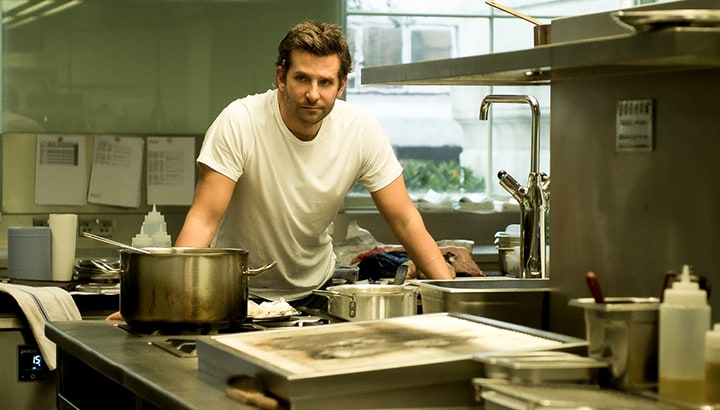
In the film Burnt, Bradley Cooper and Sienna Miller play chef in a fine dining restaurant at Langham’s Hotel in London. The critics have had their knives out for the film since its release but as Cooper plays a rebel chef called Adam Jones desperate for his third Michelin star, did they at least get the scenes set in a kitchen correct? Were all practices realistic? Was the business up to scratch? Sadly not, according to John Cornyn FCSI of Brailsford & Dunlavey and president of the FCSI Educational Foundation.
“I’m not a movie critic,” he laughs. “I actually found it an enjoyable film. But I did find some additional entertainment in spotting some of the errors in the way that the film treated food. What stuck out to me straight away as someone who spent their life in foodservice, is the way the chef would walk into the kitchen and without washing his hands, put his fingers into a pan of sauce and then put it in his mouth and taste it, then straight away taste something else. This is not a good habit to get into.
“Similarly, the kitchen team would periodically pick up a spoon, taste something and you’d never see that spoon go to the dishwasher, so presumably they kept using it. They want us to believe that a place that wanted three Michelin stars would risk contaminating the whole restaurant. I’m not sure that would happen.
“Also this is also an experienced chef at the cutting edge of food and at one point he has to be introduced to a sous-vide machine. This is technology that has been around for at least 20 years. That didn’t ring particularly true.”
Things also didn’t seem to add up on the financial side, as when our hero takes over the restaurant, he has a cavalier approach to cash.
“We’re supposed to believe that a two-Michelin starred restaurant is in financial distress,” says Cornyn. “Which I wasn’t sure about. But taking that into account, he then starts to double and triple people’s salaries without a moment’s thought. How is that going to help?
“The dining room itself seems very small but there’s certainly no shortage of staff on the service side. There are at least 24 people working in the room at any one time. I’m not sure that would be ideal as far as costs go. Also in the kitchen itself there are certainly no shortage of staff.”
The plot sees the motorbike-riding rebel Jones determined to get his third Michelin star. And the film seems to have a sure-fire way of spotting elusive inspectors – they all approach meals in the same way. Something that might not work in real life.
“The idea that they would all follow the same script is funny,” says Cornyn. “They’d all come in and order a half-bottle of wine and then place a fork on the floor. It’s not really going to happen, is it? Still, as I say, I did rather enjoy the film. It’s fun.”
Jon Horsley




